List of Authors
>>About this blog
Recent blog post
|
[Hanes]
January 13, 2019 12:00
Hello. This is a new correspondent, Hanes. 
Everyone planning to take the Chuo-ku Tourism Test, is your study progressing smoothly?
When it gets cold, it's hard to walk around the town.
In my case, on a warm day, I don't hesitate to visit historical sites and unfamiliar areas in the city.
By the way, the other day, we sent a river / bridge, Haiku / Kawayanagi, song / catchphrase as a measure for sightseeing certification in Chuo-ku.
From this time, I will introduce the route edition in two parts!
As with the river and bridge edition, for those who are not from Tokyo and do not use public transportation very much, this is the case.
I think it's a type of problem that makes you feel weak.
But don't worry!
If you hold the points, if you are not afraid of the route, you will be able to laugh and enter the test.
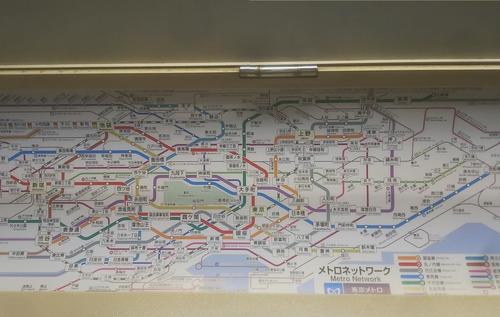
There are four points to keep in mind.
①JR East Line name and station name
②Toei Subway Line and Station Name
③Route name and station name of Tokyo Metro
④Year of opening
The route section (1) explains 1 and 2, and the route section (2) explains 3 and 4.
①JR East Line name and station name
There are only 2 JR lines that pass Chuo-ku, and only 3 JR stations!
JR Sobu Line: Bakurocho Station, Shin-Nihonbashi Station
JR Keiyo Line: Hatchobori Station
How about it?
If you divide this way, don't you feel like you can learn the route?
②Toei Subway Line and Station Name
There are only three Toei Subway lines that pass through Chuo-ku!
That is the Toei Shinjuku Line, Toei Oedo Line, Toei Asakusa Line
The number of stations on each line is 2, 3, and 5 in order.
Toei Shinjuku Line: Hamacho Station, Bakuro-Yokoyama Station
Toei Oedo Line: Tsukishima Station, Kachidoki Station, Tsukiji Market Station
Toei Asakusa Line: Higashi Nihonbashi Station, Ningyocho Station, Nihombashi Station, Takaracho Station, Higashi-Ginza Station
The Toei Asakusa Line runs to the station with Higashi in Chuo-ku.
By the way, the Toei Asakusa Line is also used when going to Haneda Airport.
I'm too good at route problems, so I challenged with no mark in last year's certification.
Unfortunately, I couldn't find the answer to the route problem that was questioned, and I was inadvertently wrong.
For this reason, this year we are taking measures for routes using the methods introduced in the future.
①Paste the route map in places you usually see (refrigerator, washroom, etc.)
②Look at the route map during commuting (because the transfer route information is often displayed)
③Memorize the announcement in the car (input "● Line changes to the line")
④One person who is not a Yamanote Line game ●● Play a line game (effective for routes with a large number of stations!)
⑤Actually use the station (regardless of whether or not you have a ride)
⑥Make a word card (station name on the front, line name on the back)
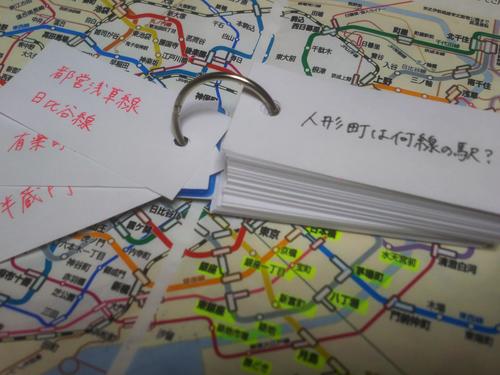
If you keep the tips on the route and remember it, think it's not scary, so let's survive!
Continue
◼️ Websites that can be used to combat route problems
JR East "Tokyo Suburban Route Map (posted in-vehicle version)"
Toei Subway Tokyo Metropolitan Bureau of Transportation Route Map
Tokyo Metro "Tokyo Metro Route Map (Detailed Version)"
※In this article, we will introduce some of the reasons for this.
If you learn the contents written here, you will not be able to pass it.
Please include it in advance.
Valuable Information| Ningyocho, Hamacho, Higashinihombashi area| Tsukuda, Tsukishima, Kachidoki and Harumi areas| Nihonbashi, Kyobashi and Yaesu areas| History, culture| Tsukiji, Shintomi, Minato area| Kayabacho, Hatchobori, and Shinkawa areas| Ginza area
Page top▲
[Hanes]
January 11, 2019 09:00
Hello. This is a new correspondent, Hanes. 
I think many people living in Tokyo bought souvenirs when they returned home at the end of the year.
I was one of them, and thought, "I want to buy New Year's souvenirs in Chuo-ku!"
I bought some souvenirs in Tsukiji, Ginza.
■"Hishi Hanabira,"
This is a product of Shiga Taneya, not Ginza, but it is a product of Shiga Taneya.
Shops that can be purchased nationwide are limited, and there are three locations in the center: Ginza Mitsukoshi store, Nihonbashi Mitsukoshi store, and Nihonbashi Takashimaya store.
When purchased at the Ginza Mitsukoshi store, the packaging says "Ginza Mitsukoshi store" and "Ginsan", which is said to have been purchased at Ginza (Chuo-ku).
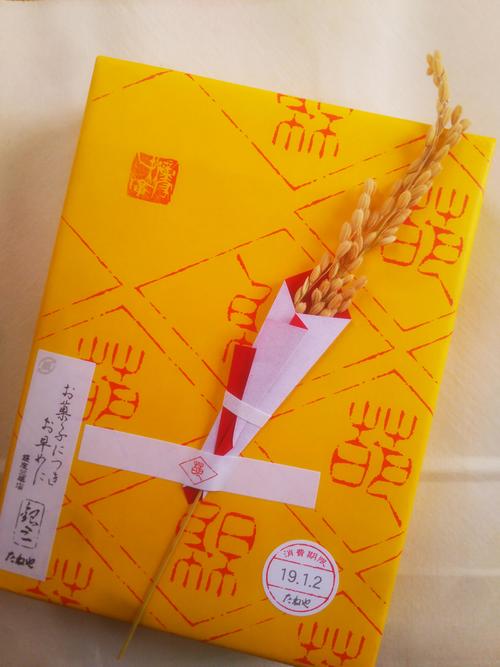
And on the inner hanging paper, it is written in seal engraving that "Is it as a noodle."
It is a sign of the Taneya Group with the meaning of "expressing using the words of the year ring and Laozi and expressing the continuation of the relationship", and it seems that it was written by calligraphers.
In addition to the packaging with rice ears, the paper is also auspicious and has a good appearance, so it is perfect for New Year's Day.
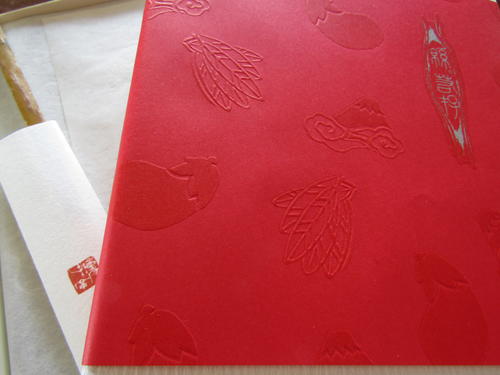
The most important thing is that it looks like this.
In addition, I also purchased "Yukiharu Enfuku Fukumi Tenpyo", but all were elegant and gorgeous, and were very satisfied Japanese sweets.
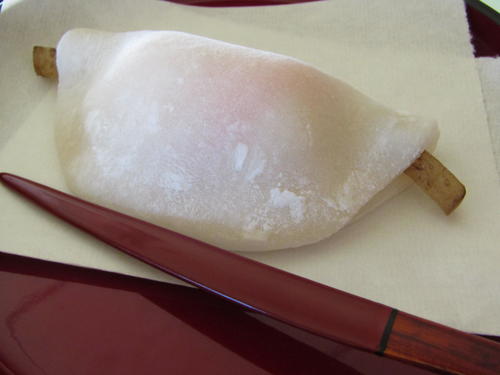
■Coffee (* This is not a souvenir that is conscious of the New Year.)
There are many coffee shops and coffee shops in Chuo-ku, but there are many coffee shops and coffee shops.
When it comes to coffee like Chuo-ku that can be mailed and lasted for a long time, isn't it easy to come up with something like this?
So, what I recommend is the No.1 "City Blend" drip bag of Tsukiji Yonemoto Coffee's unsellable savourable No.1 "City Blend" drip bag.
It has a deep and fragrant taste that cannot be reckoned even if it is a drip.
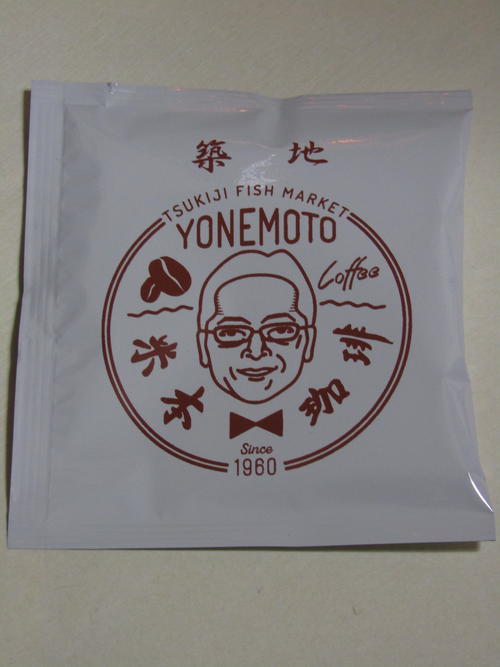
There are other coffee shops only in Chuo-ku where you can buy coffee beans, etc.
There are not many things on the package that you can see the uniqueness of Chuo-ku in Japanese and English.
How about souvenirs from Chuo-ku and gifts to acquaintances overseas?
In Chuo-ku, there are plenty of long-established products that can only be obtained here, store-limited products, and seasonal products.
It's easy to worry about choosing a souvenir, but you'll surely be happy to give it and you'll find a nice item to get it.
[Hanes]
January 6, 2019 09:00
Hello. This is a new correspondent, Hanes. 
This time, we will take up the landfill of rivers in the final round of [Chuo-ku Tourism Certification Measures] River and Bridges.
(Click here for previous articles → (1), (2), (3))
Due to many rivers and diggings, the current Chuo-ku has been called the "city of water" since the Edo period.
However, over the years, rivers have been reclaimed, and their remnants can be known from the information boards and the remaining main pillars.
When and what was landfilled, and how the town changed?...
If you remember such things like 5W1H, you can connect events with each other in a causal relationship.
The history of the development of Chuo-ku will be easier to come to mind. 
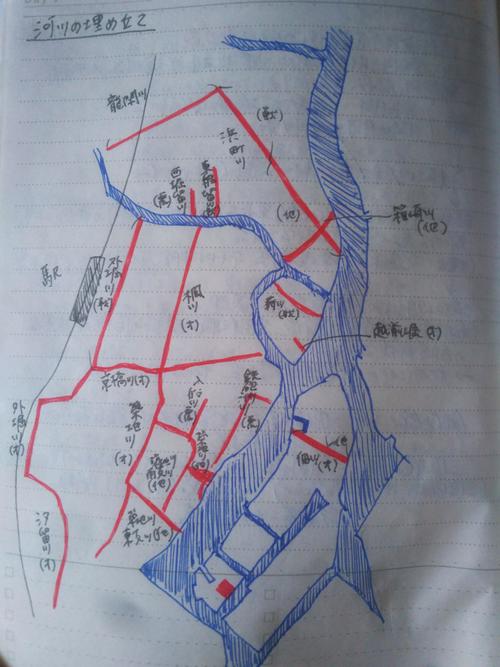
(↑ Page 1 of the countermeasure note at the time of last year's test inspection)
The events that triggered river reclamation can be broadly divided into the following four categories.
Earthquake reconstruction, war reconstruction, Tokyo Olympics, etc.
■Earthquake reconstruction
The Irifune River, the Tepposu River, and the Nishibori Ru River (Isecho Hori) were reclaimed at this early stage.
■Reconstruction of war
At that time, there were no vehicles or fuels carrying surplus soil or debris.
Therefore, rivers that are not very necessary as waterways are reclaimed with residual soil and debris to create land and create land.
The Tokyo Metropolitan Government's debris disposal measures were implemented to sell it and generate operating costs.
That was the landfill, and the northern half of the outer moat River and the Sanjuken River disappeared at this time.
■Tokyo Olympics (1964, 18th)
In preparation for the Olympics, highways, subways, and arterial roads were urgently developed.
Therefore, the Tsukiji River and Kaede River were reclaimed, and the capital height centered on Route 1 (4.5 km between Kyobashi and Shibaura) was constructed, and the Tsukuda River was reclaimed by the bridge of Tsukuda-ohashi Bridge (1964). Was.
However, because it was reclaimed too quickly, it was impossible to drain rainwater. 
Therefore, pumping stations of the Tokyo Metropolitan Sewerage Bureau were set up in Hamacho, Nakasu, and Hakozaki-cho.
<Aside>
The torch relay course is 1.5km between Kiyosu Bridge and Kayaba Bridge.
It was 2.0 km between Kayababashi and Kajibashi.
You don't have to remember in particular about river reclamation, but you don't have to worry about it.
If you know it, you will surely enjoy walking around the town.
※In this article, we will introduce some of the reasons for this.
If you learn the contents written here, you will not be able to pass it.
Please include it in advance.
Valuable Information| Ningyocho, Hamacho, Higashinihombashi area| Tsukuda, Tsukishima, Kachidoki and Harumi areas| Nihonbashi, Kyobashi and Yaesu areas| History, culture| Tsukiji, Shintomi, Minato area| Kayabacho, Hatchobori, and Shinkawa areas| Ginza area
Page top▲
[Hanes]
January 5, 2019 18:00
Hello. This is a new correspondent, Hanes. 
Although it has been a little vacant, it is a continuation of [Chuo-ku sightseeing certification measures] river and bridge.
(Click here for articles on rivers and bridges so far → (1) and (2))
This time, it is said that the junction of the three rivers, the bridge before and after that, and the four bridges are featured.
First of all, about the confluence of the three rivers and the bridge before and after that.
Suddenly, it's a problem!
・What is the first bridge to be built after the Nihonbashi River joins the Sumida River?
・Where is the Nihonbashi River divided into the Kamejima River near (place name)?
・What is the first bridge to be built after the Kamejima River joins the Sumida River?
I don't dare to answer this time, but those who can't answer the above problem suddenly.
Why don't you check before the test?
Next, it is said that the characteristics of the bridge 4 can be effectively remembered by actually seeing, writing (drawing)!
■Sumida River
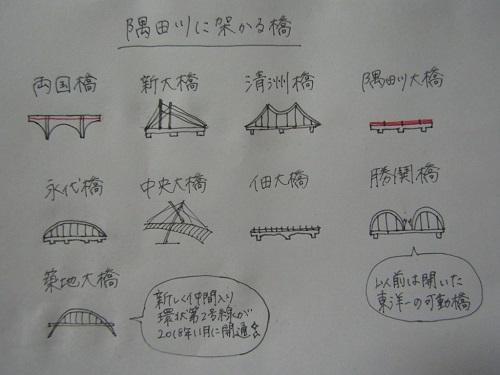
(Even if you don't have a picture, you won the game  if you can input the characteristics.) if you can input the characteristics.)
・Ryogoku Bridge (bridged after the great fire of the Meiryaku era. At that time, "Ohashi". Origin of bridge name → (1)
・Shinohashi ("Human Helping Bridge" that saved the lives of the people of Hashigami after the Great Kanto Earthquake)
・Kiyosu Bridge (a suspension bridge in Cologne, Germany) is modeled. Origin of bridge name → (1)
・Eitai Bridge (bridge to celebrate the 50th anniversary of Tsunayoshi Tokugawa's fifth generation. Japan's first steel truss bridge as a road bridge.
A tram was laid in 1904.
・Chuo-ohashi Bridge (between Shinkawa and Tsukuda. There is a "Messenger statue" commemorating friendship with Paris and Seine. )
・Tsukuda-ohashi Bridge (bridged in 1964 instead of Tsukuda's ferry). Tsukuda Bridge was removed due to the reclamation of the Tsukuda River. )
・Kachidokibashi (at the time of completion, it is called "the best movable bridge in the Toyo" and jumps five times a day.
In 1905, it began with a Kachidoki handed over to commemorate the fall of Port Arthur in the Russo-Japanese War. )
・Tsukiji Ohashi (a new bridge where Ring Route 2 passes.)
■Nihonbashi River
・Toyomi Bridge (It was also called Otome Bridge at the time of the bridge in 1698. The design looks like a ladder beside it.
The surrounding scenery is also described in Kitahara Hakushu's "Okawa Scenic" and Kafu Nagai's "Shokutei Nijo". )
・Minato Bridge (between Shinkawa and Hakozaki. The origin of the bridge name is that it corresponds to the entrance of Edo Minato.
・Kayaba Bridge (In the past, Minamizume was the shore of Kayaba (a storage area where kaya is cut and piled up), which is the origin of the bridge name.)
・Armor Bridge (a streetcar ran in Taisho-Showa. "Maison Konosu" and "Armor handing" are required. )
・Edobashi (Edobashi Hirokoji was maintained after the great fire of the Meiryaku era. In the Edo period, small shops gathered.
・Nihonbashi (bridged in 1603. The following year, it was the starting point of Gokaido. Check the 4 Hashizume Square!
・Nishi Riverside Bridge (the stage of Kyoka Izumi's masterpiece "Nihonbashi")
・Ichiishi Bridge (bridged as a wooden bridge in the early Edo period). Check the origin of the bridge name.
・Tokiwa Bridge
・Former Joban Bridge (Tokiwabashi Gate, one of the "Edo Goguchi" leading to Edo Castle front Otemon during the Edo period.)
・Shin-Tokiwa Bridge
■Kamejima River
・Reigishi Bridge (between Kayabacho and Shinkawa. In the Edo period, it was a low-marsh area full of reeds.
・Shin-Kameshima Bridge
・Kameshima Bridge (between Hatchobori and Shinkawa. Bridge in 1699. The current bridge is from 2002.
・Takahashi
・Minami Takahashi (reused part of the former Ryogoku Bridge). As a steel-frame bridge in the Meiji period existing in Tokyo
It's the second oldest after the old Dansho Bridge.
■Asashio Canal
・Asashio Ohashi, Asashiobashi, Harutsukibashi
・Triton Bridge (a moving path with a roof!)
・Reimei Bridge (Harumi-dori St. passes, parallel to Triton Bridge)
・Reimei Ohashi (a new bridge where Ring Route 2 passes.)
・Asashio Kobashi (approximately 113m bridge completed in 2003. Bicycles and pedestrians only.
■Other bridges
・Tsukuda Kobashi (bridged when Tsukuda Island is completed. Under the bridge, there is a large flag pillar used at the main festival of Sumiyoshi-jinja Shirine.
It is buried at the bottom of the river to prevent corrosion.
・Yanagibashi (Begins with a wooden bridge built by the old town. The Eitai Bridge is modeled.
It is also described in Kafu Nagai's "Peony Guest" and Riichi Yokomitsu's "Crest". )
・Shipping Bridge (it was over the Kaede River). In Higashizume, there is the residence of Shogen Mukai, the head of the Edo shogunate Mifune.
It was also called "Shogen Bridge" or "Pirit Bridge". )
The bridges introduced this time are not all, but each bridge has interesting episodes.
When walking around the town, check the information board at the side of the bridge. 
It may contain detailed information that is not available in the text, so it will be a study!
※In this article, we will introduce some of the reasons for this.
If you learn the contents written here, you will not be able to pass it.
Please include it in advance.
Valuable Information| Ningyocho, Hamacho, Higashinihombashi area| Tsukuda, Tsukishima, Kachidoki and Harumi areas| Nihonbashi, Kyobashi and Yaesu areas| History, culture| Tsukiji, Shintomi, Minato area| Kayabacho, Hatchobori, and Shinkawa areas
Page top▲
|
Links
|
![]()
![]()
![]()
![]()
![]()

![]()
![]()
![]()
![]()
![]()
![]()
![]()
![]()








